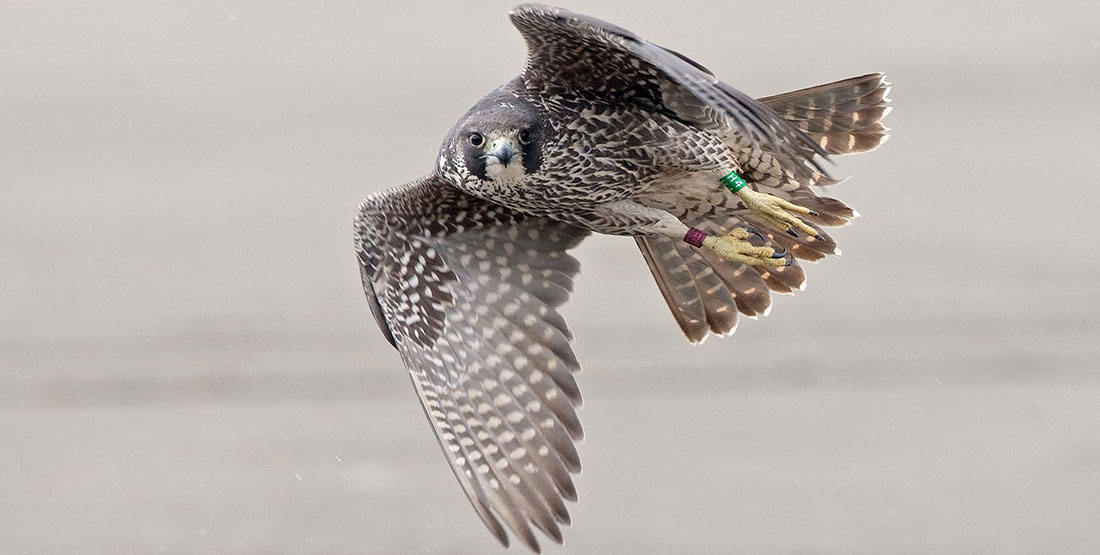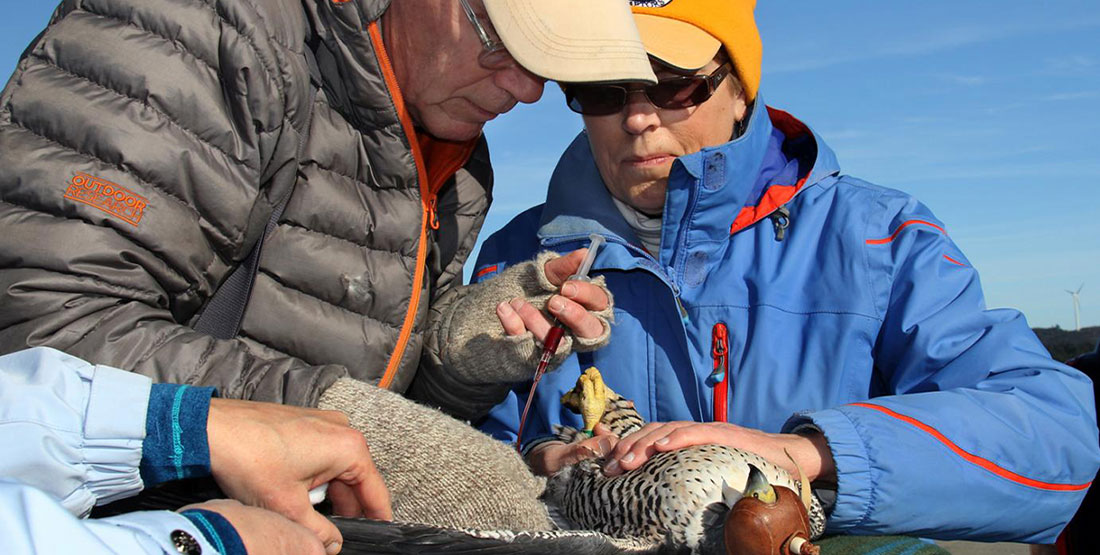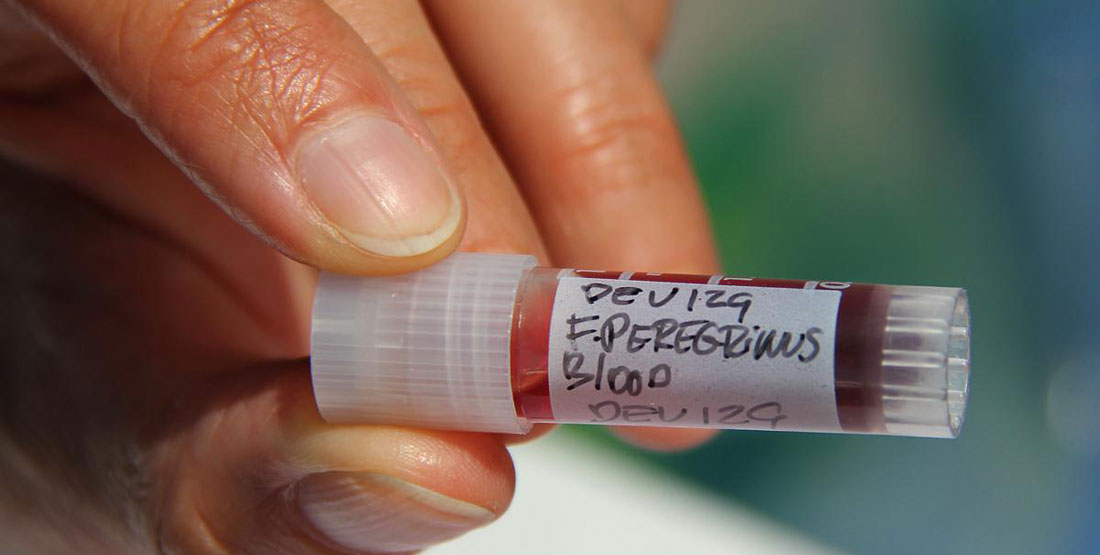Lead by Executive Director Dan Varland, more than 250 raptors of eight species have been captured and banded; the list includes 201 Peregrine Falcons and 29 Bald Eagles. Banding provides important information on life span, causes of death and the birds’ movement patterns.
After banding and before release to the wild, Coastal Raptors takes blood and feather samples, which are used to assess exposure to contaminants and disease. Many of the Peregrine Falcons are re-captured and re-sampled one or more years after initial capture, providing a valuable means to assess their exposure levels over time. Coastal Raptors sends samples for testing to labs all over the U.S.
In addition to this ongoing effort, Varland recognized that small amounts of additional blood could be set aside for genetics research, and contacted Sharon Birks, Burke Museum genetic resources collection manager. Birks was happy to provide advice on how to prepare blood samples and associated data from field work, which resulted in a donation of 150 tissue samples to the Burke’s genetic resources collection earlier this year.
The new tissue samples in the Burke collection are still accessible to Coastal Raptors’ scientists, and now researchers from around the world. Having samples in the Burke collection can help researchers answer questions about birds that are still living in the wild, as well as aid in research about conserving Washington raptors.
The Burke is grateful to Coastal Raptors for the work they do and for this partnership. The museum is working with Coastal Raptors to continue having the Burke’s genetic resources collection as a repository for new samples—which will include samples from 10–15 new Peregrine Falcons each year well into the future.
---
See more from genetic resources.




